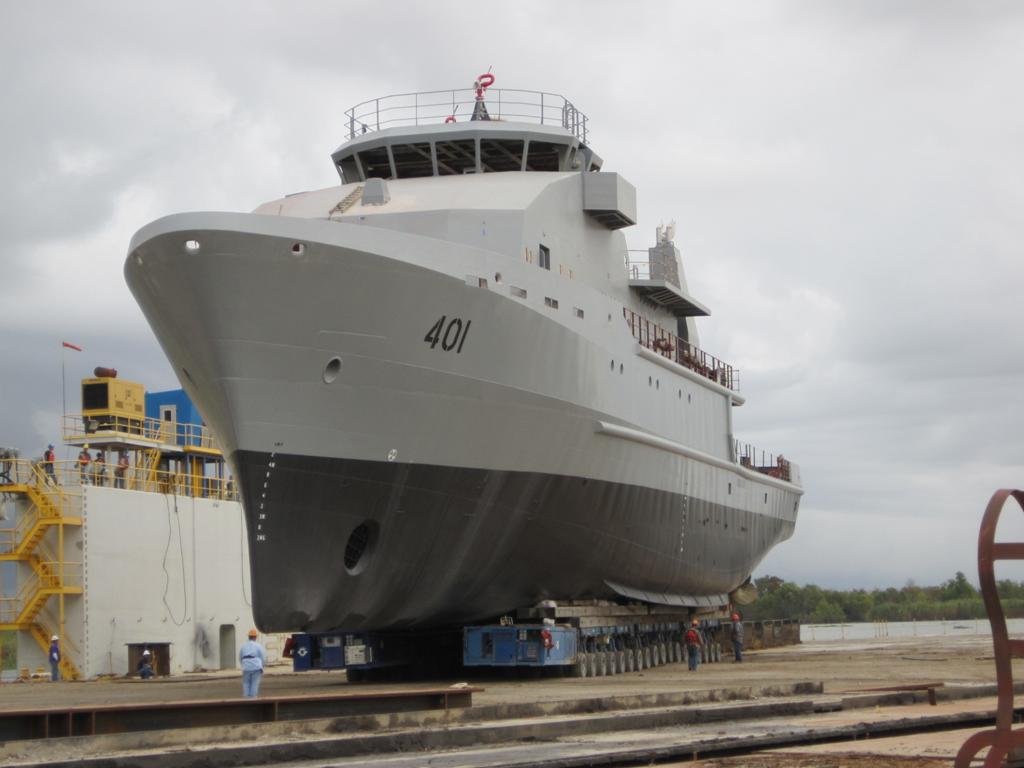
MARINE CORPS BASE QUANTICO – As the Navy and the Marine Corps narrow in on what their future amphibious operations might look like, they are considering acquiring something akin to an Offshore Support Vessel to help Marines distribute around a littoral environment in a future fight.
New Commandant of the Marine Corps Gen. David Berger turned heads when his Commandant’s Planning Guidance said “the global options for amphibs include many more options than simply LHAs, LPDs, and LSDs” and that, on account of a growing anti-access/area-denial threat environment, “visions of a massed naval armada nine nautical miles off-shore in the South China Sea preparing to launch the landing force in swarms of ACVs, LCUs, and LCACs are impractical and unreasonable.”
Since the document was released in July, those in the military and industry have speculated what that could mean.
The deputy director of expeditionary warfare on the chief of naval operations’ staff (OPNAV N95B) said the commandant’s guidance lines up with what the Navy was already considering: Offshore Support Vessels.
“How do we, as an amphibious warship force in the United States Navy, how do we support this [Expeditionary Advance Base Operations] concept?” Frank DiGiovanni said during a panel at Modern Day Marine 2019, referring to one of the Marines’ two new operating concepts.
“We came up with kind of the same thing the commandant put out in his guidance: we saw a need for a smaller set of diversified ships, we call them OSVs.”
DiGiovanni made clear that this wouldn’t come at the expense of the large multi-mission amphibious warships the Navy already buys, but “the more that you can diversify and complicate the enemy’s targeting capability, the better.”
He went on to note that Marines need large ships to get people and gear into a theater, but once there, they may be at risk if they remain concentrated. OSVs would contribute to Marines being able to disperse for their own protection, as well as giving them the agility and maneuverability to get in and around islands or other littoral water features.
“It’s a concept we’re looking at, and the commandant calls it out,” he told USNI News after the panel presentation.
“He doesn’t call it an OSV, but he does say small, scalable, more maneuverable, flexible kinds of things. The OSV is certainly a class or a type of ship we’ve worked with before.”
He acknowledged that the Spearhead-class Expeditionary Fast Transport (EPF), which the Navy bought for intratheater lift and will soon be used for ambulance-type medical transports, is also being looked at. The Austal-built EPF comes in at 103 meters long with a draft of 12.5 feet. The OSV the Navy has developed for the Iraqi Navy is 60 meters long and is primarily used to bring personnel and supplies to and from oil production platforms in the Persian Gulf. The OSV was also the basis for the design of two Pentagon-built Large Unmanned Surface Vessels, dubbed Ghost Fleet, that are being used to begin experimentation and prototyping efforts in the LUSV field.
“The book’s open right now; no decision has been made on what we want to do. But it’s certainly something we need to think about,” DiGiovanni said.





